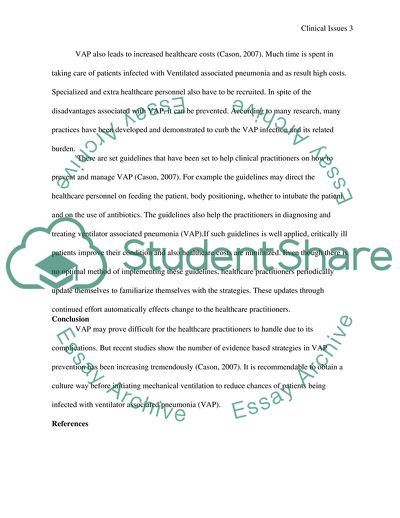Clinical Issue Article Analysis Step 1 Research Paper. https://studentshare.org/medical-science/1787683-ventilator-associated-pneumonia-control-and-prevention
Clinical Issue Article Analysis Step 1 Research Paper. https://studentshare.org/medical-science/1787683-ventilator-associated-pneumonia-control-and-prevention.


